War on dust! -- In search of dust-free paper towels
bigdoglover
15 years ago
Featured Answer
Sort by:Oldest
Comments (27)
sheilajoyce_gw
15 years agobigdoglover
15 years agoRelated Discussions
Too Much Dust
Comments (10)I just came on to post a dust thread and here yours is! I agree with the others, especially about the paper. I've just been noticing that my paper towels (Brawny) create a cloud of dust when torn, or waved around a bit. Am wanting to find some that might be dust free. So you might look into whatever paper products you're using in there. Read on wikipedia.com under "dust" that (eeuuu) it comes partly from our dead skin cells, hair, etc. Probably a lot of that in a bathroom. Dust mites (double eeuuu) feed off this organic dust and in turn they create their own dust in the form of feces and something else I didn't quite understand. Hairdryers probably blow it around a lot. Attached is the wikipedia article. DH and I got a good laugh out of "control of domestic dust" which included suggestions of: dusting, sweeping, mopping, and vacuuming. Gee, what a novel idea huh? Read another article and though I am not into the dust mite/allergy thing, the info was interesting. Here's the link: http://www.achooallergy.com/dustmiteallergy.asp?gclid=CJCjy_uprpcCFQhsgwod2Sx0jA Maybe your fan is sucking in. Is this the master bath? My problem is my master bedroom being very dusty and what I researched told me why -- lots of textiles. So if this is next to the MBR probably that is coming in and maybe as you suspect the fan is sucking it in. Also bath towels have a lot. Give them a shake and see what comes off. I got some hand towels at Tuesday Morning once, I think they were made in Pakistan, and noticed that every time I folded them (I fold on my dark cherry DR table) there was a little rectangle of gritty-linty-dust on the table. Hope that helps and if you happen to know of a dust-free paper towel, please let me know. Here is a link that might be useful: wikipedia: dust...See MoreHow do you get rid of a layer of dust from remodeling?
Comments (29)Here's one point about vacuuming extra fine construction dust that no one has made yet & it's key. When I went to buy a new brush attachment at the vacuum store to clean up our construction dust, the staff person educated me about a couple of things. Since the bag in our vacuum was paper, the ultra fine dust will flow right through it. Why didn't I think of that! Even with a thick, cloth HEPA vacuum filter bag, we run the risk of burning out our vacuum because anything that goes into the bag goes through the motor. Once that fine dust hits the motor, it doesn't take long for it to kill it. A Dyson being bagless won't work either, it just coats the inside of the vacuum, clogs & kills it. Here's further info. on that: http://www.vacuumland.org/cgi-bin/TD/TD-VIEWTHREAD.cgi?4407 He added that he's seen a brand new Kirby vacuum cleaner motor burned out after just TWO DAYS when it was used on construction dust. Kirby owners be forewarned! The suggestion of using a Rainbow vacuum is a good one because of the water filer. Of course they cost a small fortune, so I'm wondering if maybe a local rental store might rent them. It's not ideal, but neither is dropping $2K on a top end vacuum cleaner. And Mr. Rings, hopefully it goes without saying that a leaf blower is a horrible idea, unless your goal is to simply spread the dust around. ;-) I'm still figuring out how to clean up our mess, but hopefully the info. I've shared will save some from ruining their vacuum cleaners & causing undue added expense & frustration. Happy cleaning & good luck to all!...See More"Dust Sebum"
Comments (36)Sparky, like I said in another thread, CR decided not to tell consumers how the regulations really work. "Gov't hot" isn't inevitable, even given the existing regulatory framework. Here's my post from that thread: I've subscribed to CR continuously since 1987, but I think a lot less of them since an experience a few years ago. I had discovered that the main incentive for US-market washer manufacturers to reduce water and energy usage (i.e. less water and cooler water) is direct-to-manufacturer tax credits, not government mandate, and I thought everyone should know this. I contacted CR's home editor about it. When I finally got to talk to him, he said he didn't believe what I was saying, but if I sent proof then they would publish this info. After I sent the references, a senior program leader in appliances at CR wrote to me saying why they wouldn't print it: "...the claim that energy and water conservation in front-loading washers is voluntary is, technically, not correct. Both top and front-loading washers have Federal Standards that have to be met. We do not want to speculate on how effective tax incentives are at improving product performance or efficiency. We evaluate both performance and efficiency and there continues to be improvements in both areas. We regularly test these products and publish the results for the benefit of our readers." Given that the Federal Standards were far looser than the standards for getting tax credits, this answer was illogical nonsense. So here's an instance where they didn't want consumers to be informed. And the home editor not knowing these facts, and not knowing what he doesn't know, really colors my view of the whole enterprise....See MoreExcessive Dust/Lint
Comments (216)Crystal Marie, I think most people believe you but just posting a picture isn't likely to get you anywhere we all know what dust / dirt / lint? what ever it is looks like. You've got to look for the source. OR Hire someone that will do it for you. (those are your options, just arguing in a forum board with no action on your own is going to be fruitless endeavor.) Find clues: look at the structure? If you live in a single family home? Yes because then it's probably related to something you are doing or a defect in the home (negative pressure) dryer vent problem or a combination thereof. If you are living in a muti unit housing structure it could be due to some defect in the structure and what you are doing or the multitude of people that live around you. (negative pressure in your unit could be sucking in what your neighbors are doing.) It could be due to cotton wood trees or other dust / dirt related things in the outdoor air. If you can't be bothered to look at your dryer. Stop doing laundry at your house / apt. or where ever you live > Do your laundry at a laundromat for several weeks to a month. If the dust decreases use that as a clue to dig deeper. Will the dust stop completely? not necessarily. It should decrease in volume if the dryer and or washer has something to do with it. There is dust in all air, dust is brought into your home everytime you open the door / the windows etc. This fact is going to rub you the wrong way probably. Your HVAC filter is another place that can breed problems (and or be the cause of them like putting your home under negative pressure -- it sucks litterally so anything with in it's grasp is drawn into the structure. ) If there is dust outside due to running the dryer... that dust from the dryer could then be sucked right back into the structure. Another reason to stop doing laundry at your home for a few weeks to a month. Only you can do it or not....See Morelindac
15 years agoUser
15 years agomustangs81
15 years agobigdoglover
15 years agojustjustin
15 years agobigdoglover
15 years agospiritual_gardner
15 years agobigdoglover
15 years agobigdoglover
15 years agochipshot
15 years agospiritual_gardner
15 years agobigdoglover
15 years agospiritual_gardner
15 years agochipshot
15 years agolily313
15 years agobigdoglover
15 years agolinnea56 (zone 5b Chicago)
15 years agolily313
15 years agomark40511
15 years agomikie_gw
15 years agojannie
13 years agoshortal26
8 years agolinnea56 (zone 5b Chicago)
8 years agoDusty House
6 years ago
Related Stories
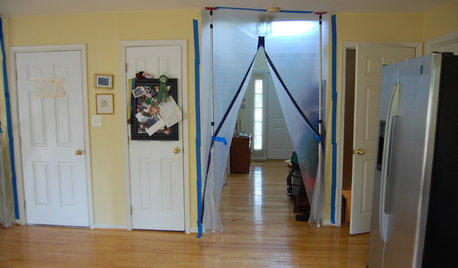
HEALTHY HOMEWhat to Know About Controlling Dust During Remodeling
You can't eliminate dust during construction, but there are ways to contain and remove as much of it as possible
Full Story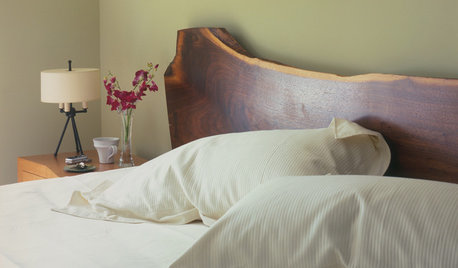
HEALTHY HOMEWhat You Need to Know About Dust and How to Fight It
Breathe easier with these 10 tips for busting mites, dander and other microscopic undesirables
Full Story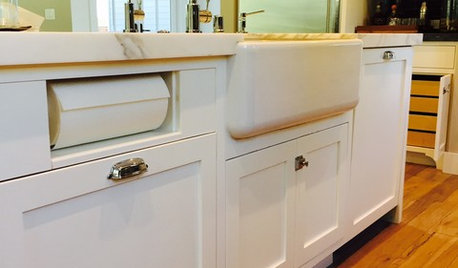
KITCHEN DESIGNKitchen Details: Out-of-Sight Paper Towel Holder
See how some homeowners are clearing the counter of clutter while keeping this necessity close at hand
Full Story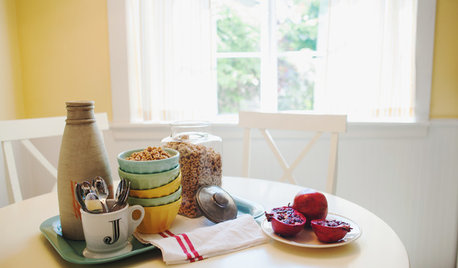
LIFEModern Manners for Conflict-Free Family Visits
Avoid thermostat wars, pet peeves and the great shower squeeze with these tips for having family as houseguests
Full Story
LIFE'Not My Precious Books!' — Pain-Free Ways to Declutter Your Library
Have your books and neatness too, with these ideas for paring down and straightening up a beloved collection
Full Story
BUDGET DECORATING21 Free Ways to Give Your Home Some Love
Change a room’s look or set a new mood without spending anything but a little time
Full Story
HOLIDAYSSet the Scene for a Stress-Free Holiday Visit
Put your guests at ease and take the pressure off hosting by prepping your space with psychology in mind
Full Story
MOST POPULAR10 Reasons to Get Rid of More Clutter
From a calmer mind to a more workable closet, the benefits of streamlining are just a few trash bags away
Full Story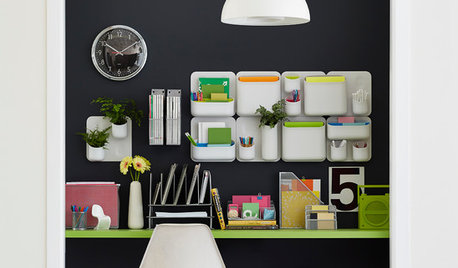
HOME OFFICES9 Hacks for a Clutter-Free Home Office
Use these clever ideas to transform a chaotic study into one that’s more conducive to working
Full Story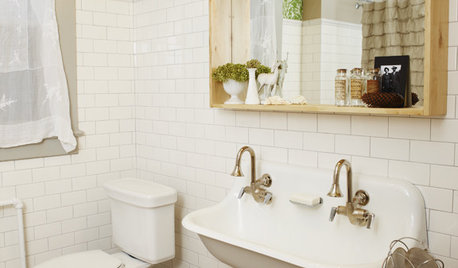
BATHROOM DESIGNSmall-Bathroom Secret: Free Up Space With a Wall-Mounted Sink
Make a tiny bath or powder room feel more spacious by swapping a clunky vanity for a pared-down basin off the floor
Full Story


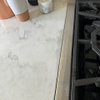


mustangs81